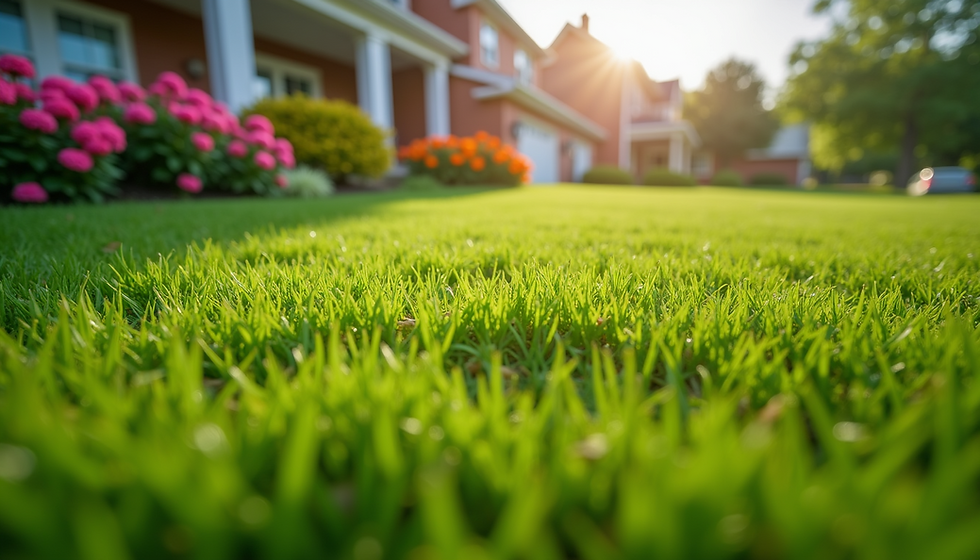Essential Landscaping Tips to Prepare Your Yard for the Fall Season
- Timothy Jacobs
- Sep 15
- 4 min read
As the days grow shorter and the temperatures drop, fall presents a stunning palette of colors and an opportunity for essential landscaping preparations. The vibrant reds, oranges, and yellows create a picturesque backdrop, signaling that it's time to get your yard ready for winter. Whether you have years of gardening experience or just a little know-how, planning your landscaping for fall can ensure your yard stays healthy and beautiful. Here are some practical tips to help you get started.
Assess Your Landscape
Before tackling any landscaping tasks, take a moment to thoroughly assess your yard. Walk around and observe your plants, trees, and lawn. Look for any areas needing attention, such as overgrown shrubs or bare patches in the grass.
Identifying these issues early allows you to create an effective plan. For instance, if you notice that 30% of your shrubs are overgrown, prioritize pruning them to encourage healthier growth. Make a list of what needs to be pruned, replaced, or enhanced to stay organized in your efforts.
Clean Up Debris
Cleaning up debris is one of the first steps in preparing your yard for fall. Fallen leaves, branches, and other organic matter can attract pests and diseases if not handled properly.
Aim to rake leaves weekly, especially if you have trees that drop a substantial number of leaves. For instance, a single oak tree can shed anywhere from 200,000 to 1 million leaves in a season. Consider composting the leaves to enrich your soil for spring. Additionally, remove any dead plants and weeds that have accumulated over the summer, as these can also be harboring unwanted pests.
Prune and Trim
As the growing season comes to an end, it's time to prune and trim your plants. This step not only helps maintain their shape but also ensures healthy growth come springtime.
Focus on removing dead or diseased branches along with any overgrown areas encroaching on your plants. Use clean, sharp tools for precise cuts, minimizing damage to your plants. Research shows that proper pruning can increase flowering in plants by up to 25%.
Plant Fall Flowers
Fall is the perfect time to add color to your landscape with seasonal flowers. Consider planting hardy perennials like asters, chrysanthemums, and sedums, known for their ability to thrive in cooler temperatures.
These flowers not only brighten your garden but also attract pollinators preparing for winter. Additionally, planting bulbs like tulips and daffodils in the fall ensures a vibrant display when spring arrives. Plant about 6-8 inches deep for optimal blooming.

Fertilize Your Lawn
As your lawn prepares for winter, providing it with the right nutrients is essential. A fall fertilizer can help strengthen the roots and promote healthy growth.
Look for a fertilizer high in potassium; this nutrient supports drought resistance and enhances overall plant health. The right balance can reduce future lawn issues by up to 40%. Always follow the manufacturer's instructions for application rates and timing to maximize effectiveness.
Aerate Your Lawn
Aeration is a vital step in fall lawn care. This process involves perforating the soil to allow air, water, and nutrients to penetrate deeper into the root zone.
Aerating your lawn in fall can help alleviate soil compaction and improve drainage, promoting healthier grass growth. In fact, aeration can increase air circulation and nutrient absorption in the soil by up to 60%. If you have a large lawn, consider renting an aerator or hiring professional services.
Mulch Your Beds
Adding a layer of mulch is an excellent way to protect your plants during the colder months. Mulch conserves moisture, suppresses weeds, and regulates soil temperature.
Opt for organic mulch like shredded bark or wood chips, as it breaks down over time, enriching your soil. Aim for a 2-3 inch layer; this provides adequate coverage while allowing your plants to breathe.
Prepare for Winter
As fall progresses, preparing your landscape for winter is critical. Protect sensitive plants from frost and harsh weather conditions.
Cover delicate perennials with burlap or frost cloth. Bring potted plants indoors or place them in sheltered locations. Additionally, inspect your trees and shrubs for signs of damage, addressing any issues before winter sets in to safeguard your landscape.
Plan for Spring
While it might seem early, fall is the perfect time to start planning for your spring landscaping projects. Identify areas that could benefit from new plants or design changes.
Creating a plan ensures you can hit the ground running come spring. Visit local nurseries or garden centers to explore new plant varieties and gather inspiration for your upcoming projects. For example, consider adding a variety of native plants that can thrive in your local climate, promoting ecological health in your yard.
Embrace the Beauty of Fall
As the fall season approaches, taking the time to prepare your landscape can significantly impact the health and beauty of your yard. From debris cleanup to planting seasonal flowers, these landscaping tips will help ensure your outdoor space remains vibrant and inviting.
Investing time in your landscape now will allow you to enjoy a stunning yard that transitions beautifully into winter and paves the way for a flourishing spring. Embrace the beauty of fall and make the most of this transformative season in your yard!










Comments